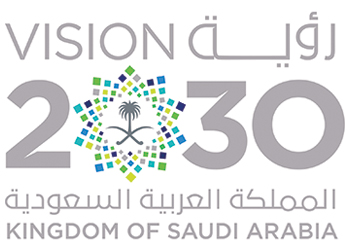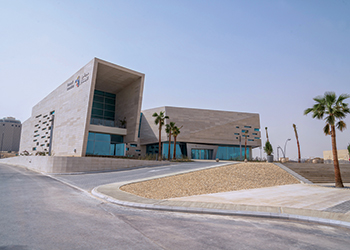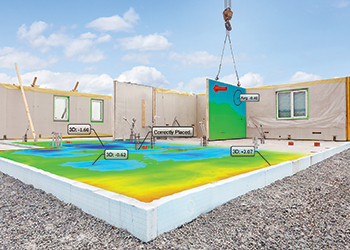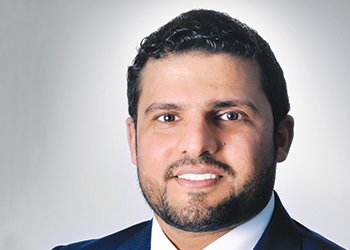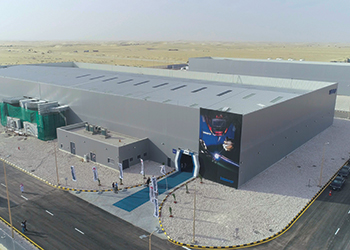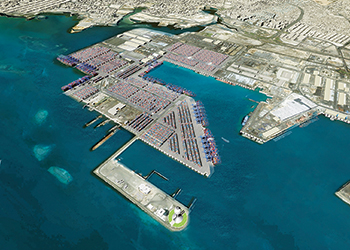
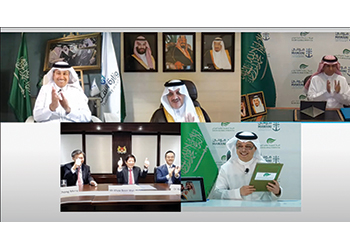 The agreement was signed under the patronage of Prince Saud, top centre
The agreement was signed under the patronage of Prince Saud, top centre
Saudi Ports Authority (Mawani) and Saudi Global Ports (SGP) in a virtual ceremony signed a 30-year new build, operate and transfer (BOT) agreement with investments exceeding SR7 billion ($1.86 billion) for container terminals at King Abdulaziz Port in Dammam.
The ceremony was patronised by Prince Saud bin Nayef bin Abdulaziz, Governor of the Eastern Region and participated by Eng Saleh Al-Jasser, Minister of Transport and Chairman of the Saudi Ports Authority; Khaw Boon Wan, Coordinating Minister for Infrastructure and Minister for Transport of Singapore; Eng Saad bin Alkhalb, President of Mawani; and Eng Abdullah Al-Zamil, Chairman of Saudi Global Ports.
According to the agreement, SGP will embark on a development and modernisation program to transform King Abdulaziz Port into a mega container hub and increase it capacity to an estimated annual handling capacity of 7.5 million twenty-foot equivalent units (TEUs). The project will provide more than 4,000 job opportunities in the port and logistics sector.
It is a part of the continuous developments carried out by Mawani in the Saudi ports.
SGP will invest and develop key infrastructure such as berths and container handling equipment, and will more than double the existing container handling capacity of King Abdulaziz Port in Dammam. The investments will focus on environment-friendly and technologically sophisticated systems, including the adoption of automation to develop a modern Saudi workforce.
Al-Jasser says: "The continuous developments in Saudi ports come in line with the national efforts to achieve goals and pillars of our country’s ambitious vision to promote sustainable economic development and raise competitiveness"
 |
Floe |
He says the agreement enhances logistics, raises the reliability of supply chains, supports local and international trade and contributes in raising the rank of the Kingdom at the logistics performance index to become among the 25 best countries around the world. The agreement, he adds, also attracts new investments to the national economy, support local content and national industries and increase the national exports and imports that contribute to creating promising investment opportunities.
Alkhalb says the total expected investments in Jeddah Islamic Port and King Abdulaziz Port in Dammam amount to approximately SR17 billion.
Wan says this partnership strengthens the relations and cooperation between Saudi Arabia and Singapore, and indicates a qualitative shift witnessed at Saudi ports in their systems and procedures by launching more advanced services in its ports along the western and eastern coasts.
It is worth noting that King Abdulaziz Port is the largest Saudi port on the Arabian Gulf coast spread over 19 sq km. It has 43 berths and a capacity of 105 million tonnes. It is linked with Riyadh Dry Port by railway, which helps goods from all over the world enter the Eastern and Central Regions of the Kingdom.
The port has modern handling equipment that enables it to handle various types of cargo. It includes two advanced container terminals, one refrigerated cargo terminal, two general cargo terminals, two cement plants: one for exporting black cement and clinker and one for white cement, bulk grain terminal, Iron ore handling terminal, naval vessel manufacture area and gas and oil platform. The port contains a ship repair facility that includes two floating ship docks to accommodate ships up to 215 m long.
Separately, Red Sea Gate Terminal (RSGT) has officially taken over operations in the northern section of Jeddah Islamic Port, significantly expanding its operational capabilities and capacity.
In a 30-year concession agreement signed with Mawani, RSGT will invest $1.7 billion in infrastructure, equipment and technology by 2050, with annual container throughput capacity growing to 8 million TEUs.
 |
RSGT will invest $1.7 billion in the Jeddah Islamic Port |
"As we begin operations at the northern part of Jeddah Islamic Port, we are very proud to commemorate this tremendous milestone of the RSGT growth strategy, demonstrating our ongoing and long-standing commitment to expansion, modernization, and world-class terminal services," says RSGT CEO Jens Floe.
By 2023, the expanded RSGT, covering an area of 1.5 million sq m, will have increased annual container throughput capacity to 5.2 million TEUs.
Already able to accommodate Ultra-Large Container Ships (ULCS) of 20,000 TEU class and above, at the end of the first three-year phase of investment, RSGT will be equipped with 24 Super Post-Panamax quay cranes, 67 Rubber-Tyred Gantry Cranes (RTGs), and will offer 4,900 Reefer plugs.
"This carefully planned programme of growth and investment will firmly establish RSGT as the largest logistics gateway, and the busiest container terminal, in Saudi Arabia, and on the Red Sea," says Floe.
Red Sea Gate Terminal has already signed an Islamic financing agreement with Banque Saudi Fransi and Al Rajhi Bank for the project.



















































































